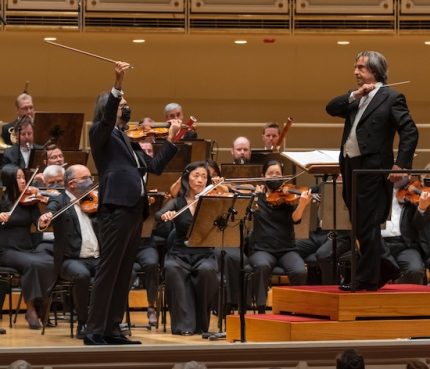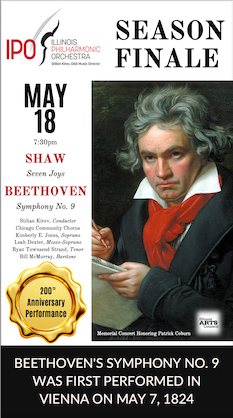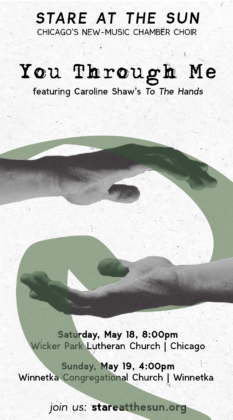Kavakos, Muti and CSO make beautiful Brahms together

Riccardo Muti was at the helm again Thursday night for the middle week of his fall residency marking the return of live audiences to Chicago Symphony Orchestra concerts at Orchestra Hall. While it is certainly too soon to consider this time “post-pandemic”—with no intermission or concessions, masks required, and lines stretching onto Michigan Avenue for vaccine credential checks—the orchestra itself is sounding as fine as in the Before Times.
Leonidas Kavakos was the solo protagonist in the Brahms Violin Concerto in Thursday’s 19th-century Germanic program. Muti brought motion and urgency to the expansive introduction, setting the stage for Kavakos’ searing opening gesture. Kavakos’ playing throughout the Allegro non troppo had an organic, rhapsodic feel, a few eccentricities in phrasing notwithstanding.
What set this performance apart was the unity of soloist and orchestra. When the Brahms concerto was premiered, it was criticized as a “concerto for violin against orchestra,” an unfairly negative assessment of the way Brahms more thoroughly integrated the solo part with the accompaniment than was traditional. Throughout Thursday’s performance Kavakos and Muti were always attuned to what is truly foreground and what is background in Brahms’ score, with the violinist ceding the spotlight when the melodic interest lay elsewhere, and even occasionally joining the tutti violins.
Following Kavakos’ peculiar cadenza choices in his last CSO appearance in the Beethoven concerto, one was relieved that he opted for the familiar Joachim cadenza for his turn in the Brahms. With unimpeachable technique he gave the cadenza an improvisatory, personality-plus rendition that did justice to the storied virtuosity of its composer.
Principal oboe William Welter has had a busy two weeks, in the spotlight for Beethoven’s “Eroica” last week, and again Thursday in the opening of the Adagio of the Brahms. His playing was exquisite, brighter in tone than his predecessors Eugene Izotov and Alex Klein, and ably supported by his wind colleagues in the limpid chorale that opens Brahms’ slow movement.
Kavakos spun his solo elaborations of this theme with reflective grace, and his dialogue with Welter when the opening material returns felt gently simpatico. The closing Allegro giocoso had snappy wit and esprit, with Kavakos and Muti driving the closing gypsy march to a rousing conclusion.
Beethoven’s Symphony No. 7 followed. Muti’s reading of the “Eroica” last week felt revelatory in many ways, a significant update on his performances of two years ago. Thursday’s Seventh was undeniably accomplished, but did not quite mine the same freshness and depth the Italian found in Beethoven’s earlier score.
Muti brought heft and vigor to the opening Poco sostenuto, where the descending intervals that foreshadow the harmonic motion of the entire symphony were emphasized. The Vivace made Wagner’s characterization “the apotheosis of the dance” feel spot-on, with Muti bringing out fresh details in the familiar score, and nervous kinetics to the development section. Principal horn David Cooper’s playing gleamed in the movement’s closing bars.
The inner movements felt less successful. While Muti began the Allegretto at a clip that did justice to the tempo marking, it felt like it ultimately settled into a more generalized walking pace, though he charted an ethereal evaporation before the lurching closing gesture. The slower wind chorales of the Presto were graceful and shining, though the many iterations of the faster thematic material came to feel repetitious. Muti almost crouched below his stand for the amusing pianissimo episode, but the effect didn’t entirely come across musically.
There were no qualms to be had with the final Allegro con brio, however, which Muti whipped into a glorious, swirling commotion, while keeping the quiet phrases light on their feet. Cooper and his brass colleagues helped bring the work to an ecstatic conclusion.
The program will be repeated 1:30 p.m. Friday and 8 p.m. Saturday. cso.org
Posted in Performances



